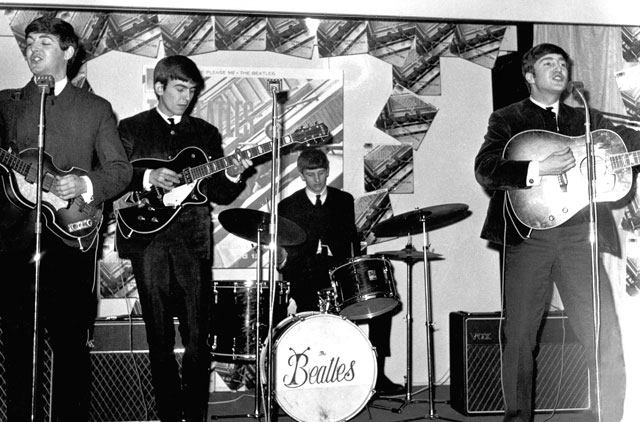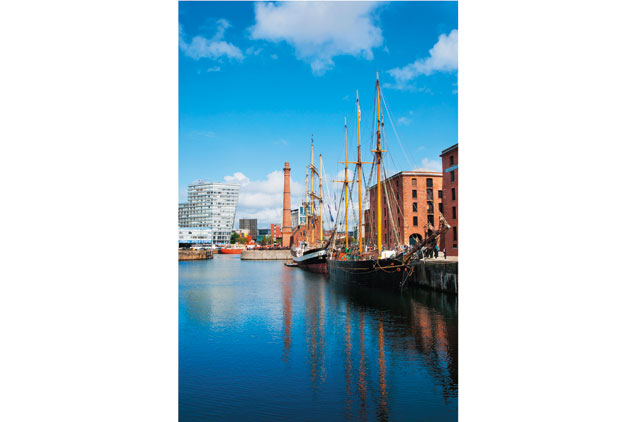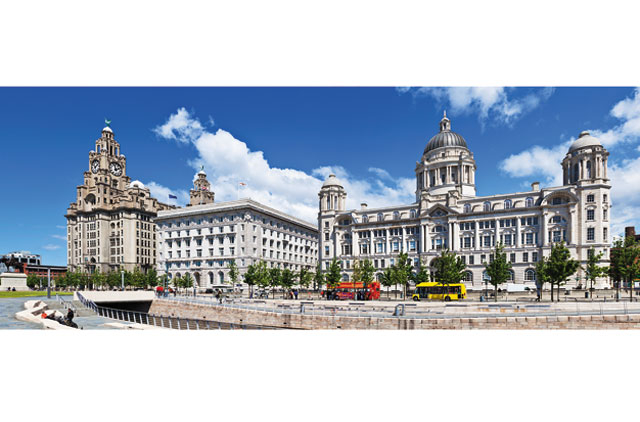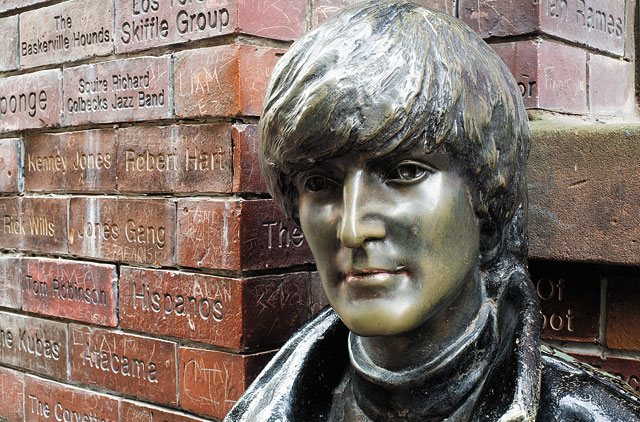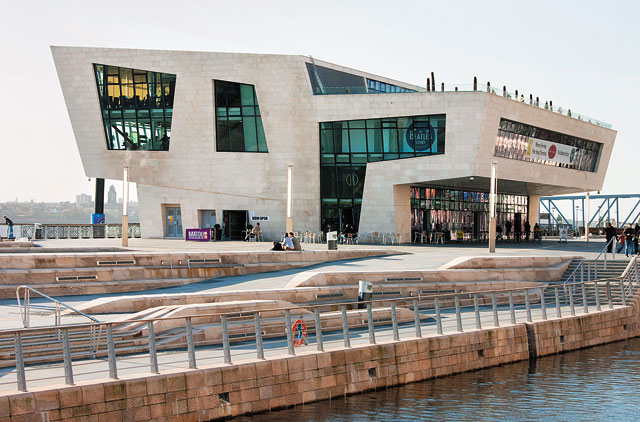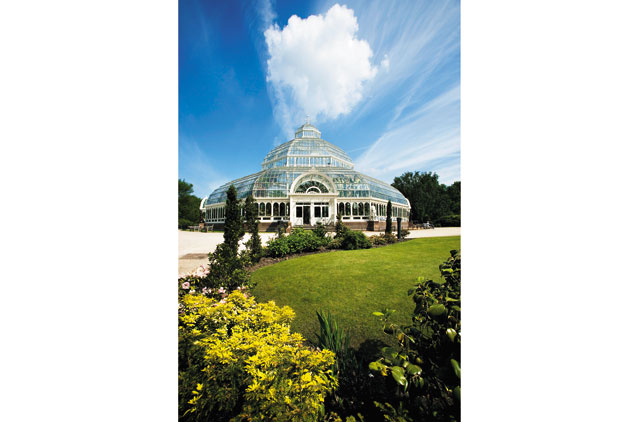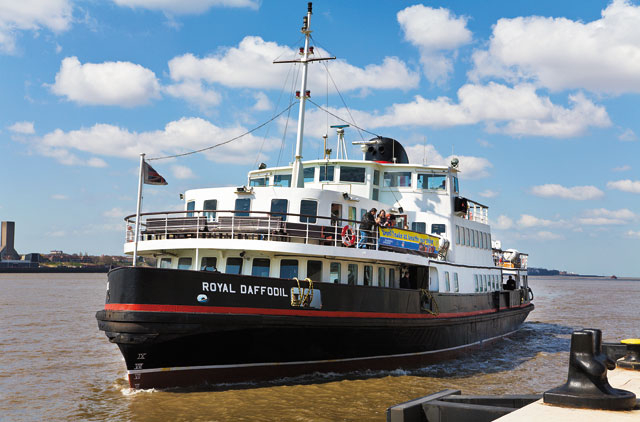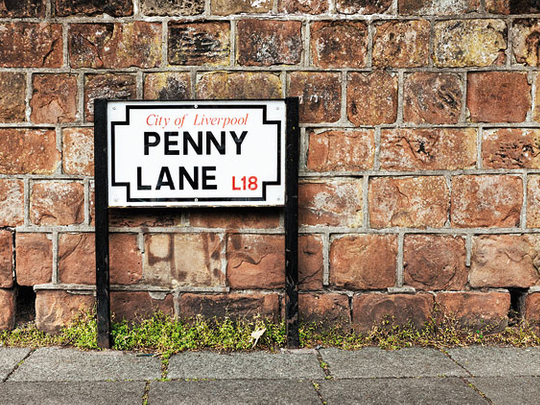
Mention Liverpool to almost anyone in the world and their face breaks into a broad smile: “Ah, Liverpool – football and the Beatles,” they muse. Football
in the city is still going strong with hordes flocking to see matches most weekends – and over four decades after the Beatles broke up, their musical heritage is still throbbing in this liveliest of cities.
Most visitors to Britain head to London and its sights. But venture about 300 kilometres north to the port city of Liverpool, and it quickly demonstrates just why it won the European Capital of Culture honour five years ago.
As the Albert Dock – the country’s largest group of Grade I listed buildings – celebrates the 25th anniversary of its reopening at the end of this month, and as Liverpool prepares for the annual Beatles festival at the end of August, the city’s maritime and musical heritage is evident everywhere you turn.
We began our visit at the Albert Dock with a ride on the Second World War amphibious vehicle, the Yellow Duckmarine – or the Wacker Quacker, as locals dub it – which chugs slowly along the city’s magnificent waterfront. Towering over the River Mersey are the Three Graces, those splendidly ornate buildings that were the last sight of Liverpool for the thousands who sailed to the US for a new life. And perched on top of the Liver Building – one of the most recognisable landmarks in the city – are the five-and-a-half-metres tall Liver Bird statues, cormorant-like mythical creatures that are symbols of Liverpool.
Visitors today gaze up at Titanic-owner White Star Line’s building, which was besieged by anxious relatives after the tragedy of the ship sinking while staff, trapped in their own building, emerged on balconies to read the names of the deceased to the crowds.
Here, there and everywhere
As the Duckmarine turns up into the city, you pass the Hard Day’s Night Hotel, where statues of the Fab Four gaze down on the world. Peer down the narrow Mathew Street, and you glimpse the bronze John Lennon leaning laconically against the wall, close to the spot where the fab four played at the Cavern Club.
Liverpool is riddled with sights associated with the Beatles, from the grand old Vines on Lime Street, where John Lennon held his wedding reception after his marriage to first wife Cynthia, to the lovely Hope Street up the hill where he attended art school.
As the world’s only street linking two cathedrals, Hope Street is now lined with fine restaurants and home to the Royal Liverpool Philharmonic Orchestra too. And, as the amphibious Duckmarine enters the water to tour the magnificent docks, visitors can keep a look out for a glimpse of the Yellow Submarine...
To trace the story of the Beatles back to its roots, there’s no better place than the award-winning Beatles Story museum. As a port where sailors returned from the US with the newest records, Liverpool was in a prime spot during the mid-20th-century to enjoy the music of Chuck Berry, Bill Haley and the Comets, Buddy Holly, Little Richard and of course Elvis Presley: as John Lennon observed, “Without Elvis there would be no Beatles.”
At The Beatles Story museum, you trace the tale of Paul McCartney’s meeting with George Harrison on the school bus, and the day Paul met John at a church fete and demonstrated his own guitar skills. A few steps further on, and you plunge into the dark world where the Beatles played amid the seedy nightlife of Hamburg, Germany. And then, at the heart of the museum, is a recreated Cavern Club where they drew crowds each night, finally attracting the attention of the local record shop owner, Brian Epstein, who became their manager and drove them to success.
The next few rooms in the museum are simply whirlwind – the Beatles winning a recording contract and taking the world by storm, moving on to conquer the States, and then returning to crowds of fans who screamed so loudly they nearly drowned the music. And the rest, as they say, is history.
For a brief interlude of something other than Beatles culture, there’s the Tate Liverpool, the Northern contingent of the London art gallery. This hosts an array of great works as well as limited-run exhibitions – catch an in-depth look at 20th-century master Marc Chagall’s pieces until October.
There is also plenty of opportunity to sample some exquisite food.
The Albert Dock is lined with every kind of restaurant, from sleek fine dining to independent bistros, while the Wirral, overlooking the Liverpool skyline, is home to Restaurant Fraiche – the region’s first Michelin-starred venue.
Ticket to ride
Although the city centre evokes the Beatles at every turn, journeying out to the suburbs on the Magical Mystery Tour bus takes visitors back to the places that inspired so much of their music. Driving up from the Dock and through the city centre, you soon reach the terraced streets that were home to Beatles drummer Ringo Starr – changing his name from Richard Starkey, he took inspiration from the large glittering rings he wore.
Skirting the wonderful Sefton Park, the city’s largest, visitors soon reach Penny Lane, which inspired the tune of the same name: on the corner visitors now line up for photographs next to the sign. The bus pauses outside Epstein’s grand home, and 251 Menlove Avenue, or Mendips, where John lived from the age of five – and where he retreated to his bedroom with his guitar after his mother Julia was tragically killed while crossing the road from the house.
Since John’s widow Yoko Ono seized the opportunity to buy Mendips when it came on to the market and donated it to the National Trust, visitors to the city can now take a pre-booked tour of John’s and Paul’s boyhood homes between March and October. Nearby the young John would disappear for hours to play in the verdant grounds of the children’s orphanage, Strawberry Field, which inspired yet another song.
And as the Magical Mystery Tour pulls up outside the church hall in Woolton where Paul saw John’s Quarrymen band play at the church fete, fans may well muse on how much music the world would have lost without that chance meeting on a summer’s day in 1957. Back in the heart of the city, musical heritage is alive and thriving in Mathew Street, in the famous Grapes pub, which boasts a photograph of the Fab Four sitting in an alcove there.
All together now
The impressive roll call of musicians who played at the historic Cavern Club just a few steps away goes on and on – the Rolling Stones, Eric Clapton, Elton John, Queen, Status Quo, Oasis and of course those 292 or so performances by the Beatles, as their fame grew and fans reached fever pitch.
In a city where the two surviving Beatles still visit occasionally, the memory of the greatest band in the world and the musical heritage it left is alive and kicking. As one more keen young guitar band troops on to the historic stage of the Cavern and begins to play, visitors link arms beneath its famous arches and start to sing along to Hey Jude.
Decades after their vibrant music took the world by storm, the Beatles’ legacy is celebrated every day in this greatest of musical cities.


